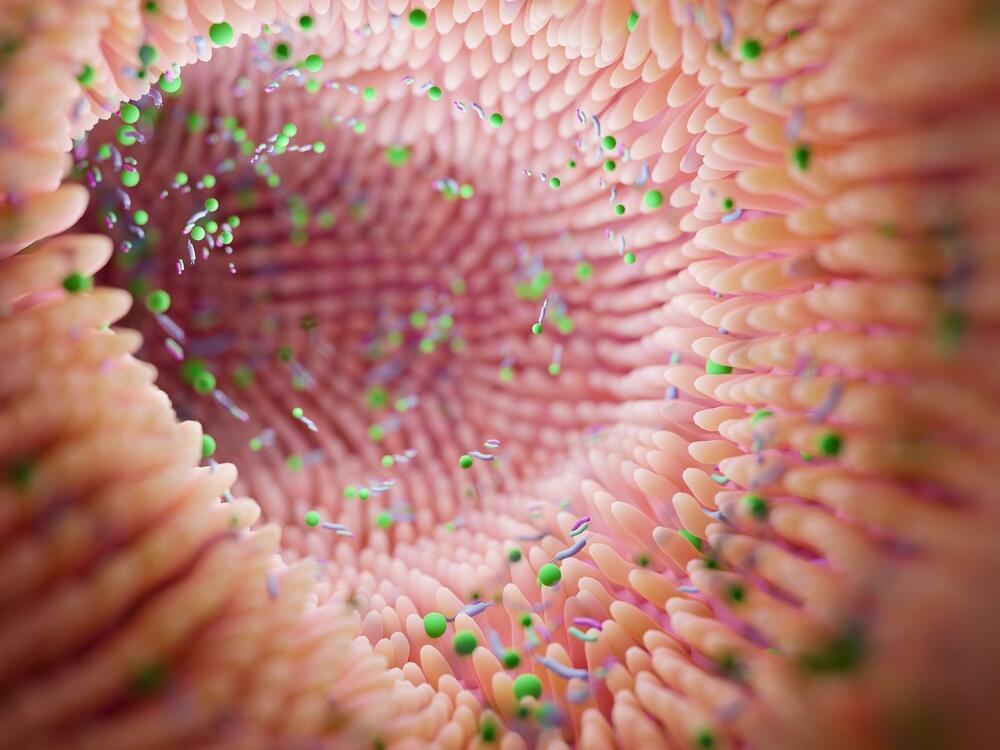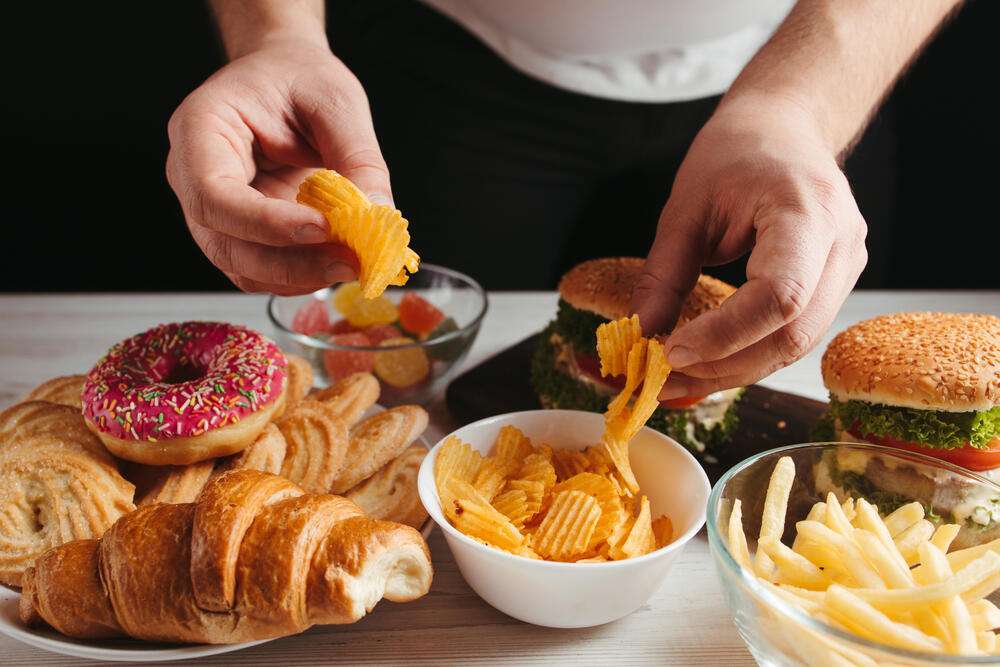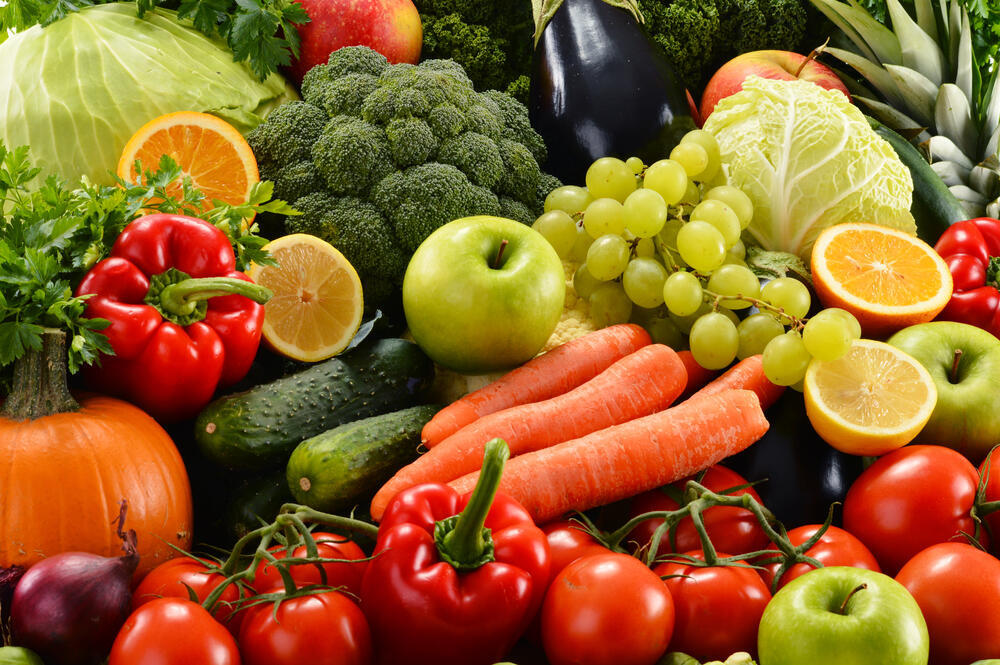Getting your Trinity Audio player ready...
Our health is partly dependent on our interactions with our microbiome - a vast population of bacteria, viruses, fungi and other tiny organisms that reside in our bodies, especially in our intestines and on our skin.
A new study, led by Israeli scientists, traced the evolutionary history of our gut bacteria and found that the quantity of bacteria that are able to break down dietary fibers is declining due to the transition to modern nutrition. The implications of this trend on our health remain speculative at present
Carbohydrates, one of the most important components in human nutrition, include sugars and other molecules used by our bodies to generate energy and support cellular functions. They are present in various foods like bread, fruits and vegetables, yet their ease of utilization varies. Monosaccharides, such as glucose, are short molecules readily utilized by the human body.
In contrast, polysaccharides, such as cellulose or starch, are composed of long chains of monosaccharides, needing breakdown into basic subunits. Amongst these are plant polysaccharides that do not break down in the gastrointestinal tract, known as dietary fibers.
Simple carbohydrates, including even polysaccharides like starch, are broken down in our digestive system by specific proteins - digestive enzymes. In contrast, more complex carbohydrates like cellulose require the assistance of bacteria residing in our large intestines. The difference in the rate of digestion of different carbohydrates in our body has a significant effect on blood sugar levels and various other processes.
Thus, the ecosystem in our large intestines heavily depends on the polysaccharides we consume. Beneficial bacteria need these polysaccharides to thrive. Their regular supply is essential for maintaining a balanced microbiome, which helps prevent harmful bacteria from multiplying and damaging our health.
The intestines’ army of fiber degraders
In the past, it was believed that humans have no gut bacteria capable of breaking down cellulose—a dietary fiber that is the main component in plant cell walls. Cellulose-degrading bacteria, such as those found in the intestines of cows and other ruminants, can disassemble the fibers in plant material containing complex sugars and transform them into an available energy source. Their hosts, in whose intestines they reside, benefit from the products of this degradation.
An international team, led by Israeli scientists, conducted an extensive study analyzing the hereditary material of bacteria that live in human intestines. To identify and recognize the relevant bacteria, the researchers initially searched genetic databases for a specific sequence that is related to cellulose degradation in Ruminococcus bacteria (Ruminococcus flavefaciens).
The databases searched included detailed genetic data from current samples of human feces, as well as similar data extracted from samples from our near and far history. In total, 6,000 groups of genes were identified that may be related to bacteria that break down dietary fibers. Next, they determined which bacteria the located sequences belonged to and screened out those that do not break down cellulose.
Following the screening, 62 promising sequences were meticulously examined to identify their ability to generate proteins involved in the process of cellulose degradation. The bacteria species that these sequences were identified in are uncommon in modern humans living in urbanized and industrialized societies but are much more common in great apes and other non-human primates, as well as in early human societies, hunter-gatherer societies and rural populations.
These findings suggest that human gut bacteria and ruminant gut bacteria share a common history. Cellulose-degrading bacteria, such as Ruminococcus, were common in the intestines of both humans and other animals, implying that these bacteria were transferred from ruminants to humans during their domestication.
The town bacteria and the country bacteria
The bacteria not only transferred to humans but also adapted to them. They began consuming the cellulose of plants typical in the human diet—such as corn, rice and wheat—digesting it and releasing the products into the large intestines. The proteins they use for degradation have evolved to better break down these plant fibers, which constitute staples of human nutrition.
However, the relationship between cellulose-degrading bacteria and humans has been gradually impaired due to urbanization and industrialization, which have led to a reduction in the amount of plant fibers in human diets. Under these conditions, it is harder for these bacteria to thrive. As a result, fiber-degrading bacteria that were once abundant in human intestines are gradually declining in urban populations where diets are more heavily based on processed foods.
Currently, consumption of dietary fibers varies and declines. Mature hunter-gatherers would normally intake 80 to 150 grams of fiber daily. In rural populations, their estimated consumption is down to 14 grams per day, while urban modern diets settle for about 8.4 grams per day. It appears that this trend is not unique to humans; comparing the quantity of dietary fiber-degrading bacteria between great apes in the wild and those living in captivity reveals a significant decline in these bacteria populations in captive apes. This figure also reinforces the hypothesis that the difference stems from their lifestyle and its effect on nutrition.
Effect on health
The repercussions of this process on the health of the digestive system require deep examination. Fiber degradation is a complex process that requires special abilities that bacteria have developed over many years of evolution. Consequently, they efficiently break down cellulose fibers into digestible and nutritious sugars and thereby feeding a diverse community of bacteria that may be important for our health.
The transition to processed food, which is poor in fiber, might jeopardize this delicate balance. In populations that consume little plant-based food, the decline of fiber-digesting bacteria is accelerated, potentially leading to negative outcomes. The link between the disruption of gut bacteria activity and obesity has been illustrated in the past, and hypotheses have been made regarding their connection to chronic diseases. There is also evidence for their involvement in our sensory input and brain activity.
Degradation of cellulose and dietary fibers, in general, is a difficult and complicated task. The reduction in the quantity of cellulose-degrading bacteria in urban populations indicates a worrisome trend of disruption in the balance of the gut bacteria population.
It is possible that eventually, we will have no choice but to apply treatments to mitigate the damage, such as taking probiotics or undergoing fecal transplants to renew the variety of gut bacteria. Preserving our tiny microbial allies is essential for reducing metabolic disorders and intestinal diseases.
Much work is still needed to fully grasp the significance of this new discovery. Detailed follow-up studies are necessary to determine what compositions of dietary fiber-degrading bacteria are required for our health and what their specific contributions are to different aspects of our well-being—if any.




